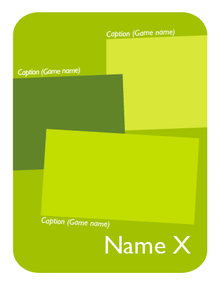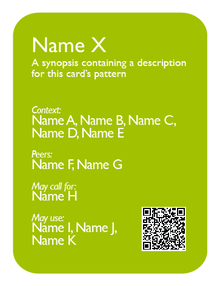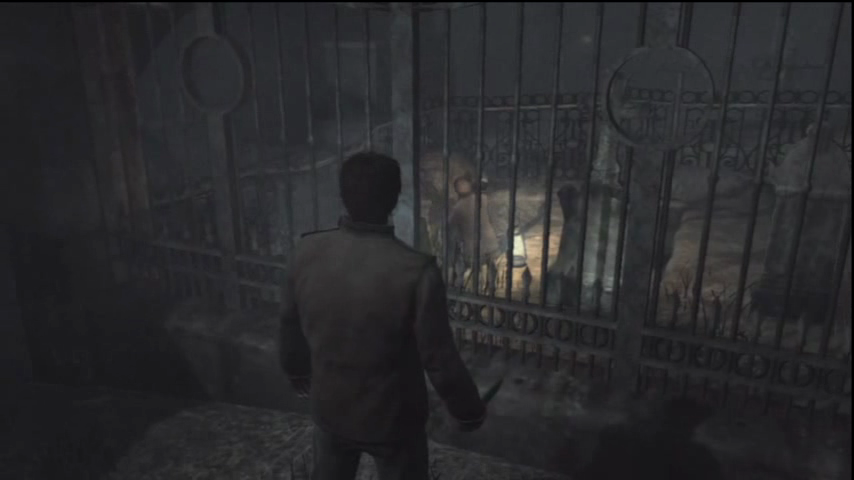Difference between revisions of "Thoughts"
ValterAlves (Talk | contribs) m |
ValterAlves (Talk | contribs) m |
||
| Line 11: | Line 11: | ||
| screenshots= | | screenshots= | ||
| rel-tag1=Contexts:<br> | | rel-tag1=Contexts:<br> | ||
| − | | rel1=[[Narrative]], [[Gameplay]]<br> | + | | rel1=[[Narrative]], [[Emotional Script]], [[Gameplay]]<br> |
| rel-tag2=May relate to:<br> | | rel-tag2=May relate to:<br> | ||
| rel2=[[Narrator]]<br> | | rel2=[[Narrator]]<br> | ||
| rel-tag3=May use:<br> | | rel-tag3=May use:<br> | ||
| rel3=[[Dialogue]]<br> | | rel3=[[Dialogue]]<br> | ||
| − | | description = [[Thoughts]] allow expressing messages in a diegetic way. The associated introspection also contributes to inspire and maintain a sense of immersion in the experience. Additionaly, from an emotional standpoint, providing access to the PC's [[Thoughts]] has the potential to enhancing the empathy between the player and the PC. | + | | description = [[Thoughts]] allow expressing messages in a diegetic way. The associated introspection also contributes to inspire and maintain a sense of immersion in the experience. Additionaly, from an emotional standpoint ([[Emotional Script]]), providing access to the PC's [[Thoughts]] has the potential to enhancing the empathy between the player and the PC. |
| + | |||
[[Thoughts]] often consist of [[Dialogue]] that contributes to the [[Narrative]], though other solutions have been explored. When [[Dialogue]] is used, it can actually be spoken (though usually in a quiter tone, being directed to the self), or it can be represented as a verbalization "inside the head" of the character. Usually, the latter case uses some acoustic effect, specially when the distinction is relevant (for instance when other characters are present). | [[Thoughts]] often consist of [[Dialogue]] that contributes to the [[Narrative]], though other solutions have been explored. When [[Dialogue]] is used, it can actually be spoken (though usually in a quiter tone, being directed to the self), or it can be represented as a verbalization "inside the head" of the character. Usually, the latter case uses some acoustic effect, specially when the distinction is relevant (for instance when other characters are present). | ||
| examples= | | examples= | ||
Revision as of 19:15, 13 October 2011

|

| |
| The card's front face | The card's back face |
Candidate Card (new in version 2.0)
Contents
Synopsis
| Revealing what a character is thinking of. |
Relationships
Contexts:
Narrative ![]() , Emotional Script
, Emotional Script ![]() , Gameplay File:M385px-Gameplay-front-v20.png.
, Gameplay File:M385px-Gameplay-front-v20.png.
May relate to:
Narrator ![]() .
.
May use:
Dialogue ![]() .
.
Description
Thoughts allow expressing messages in a diegetic way. The associated introspection also contributes to inspire and maintain a sense of immersion in the experience. Additionaly, from an emotional standpoint (Emotional Script), providing access to the PC's Thoughts has the potential to enhancing the empathy between the player and the PC.
Thoughts often consist of Dialogue that contributes to the Narrative, though other solutions have been explored. When Dialogue is used, it can actually be spoken (though usually in a quiter tone, being directed to the self), or it can be represented as a verbalization "inside the head" of the character. Usually, the latter case uses some acoustic effect, specially when the distinction is relevant (for instance when other characters are present).
Examples
  |
  |



